This year's Cyberpunk 2077 gameplay demo is staggering in scope and detail
At E3 2019, we got a fresh look at Cyberpunk 2077 gameplay. Here's what we thought.
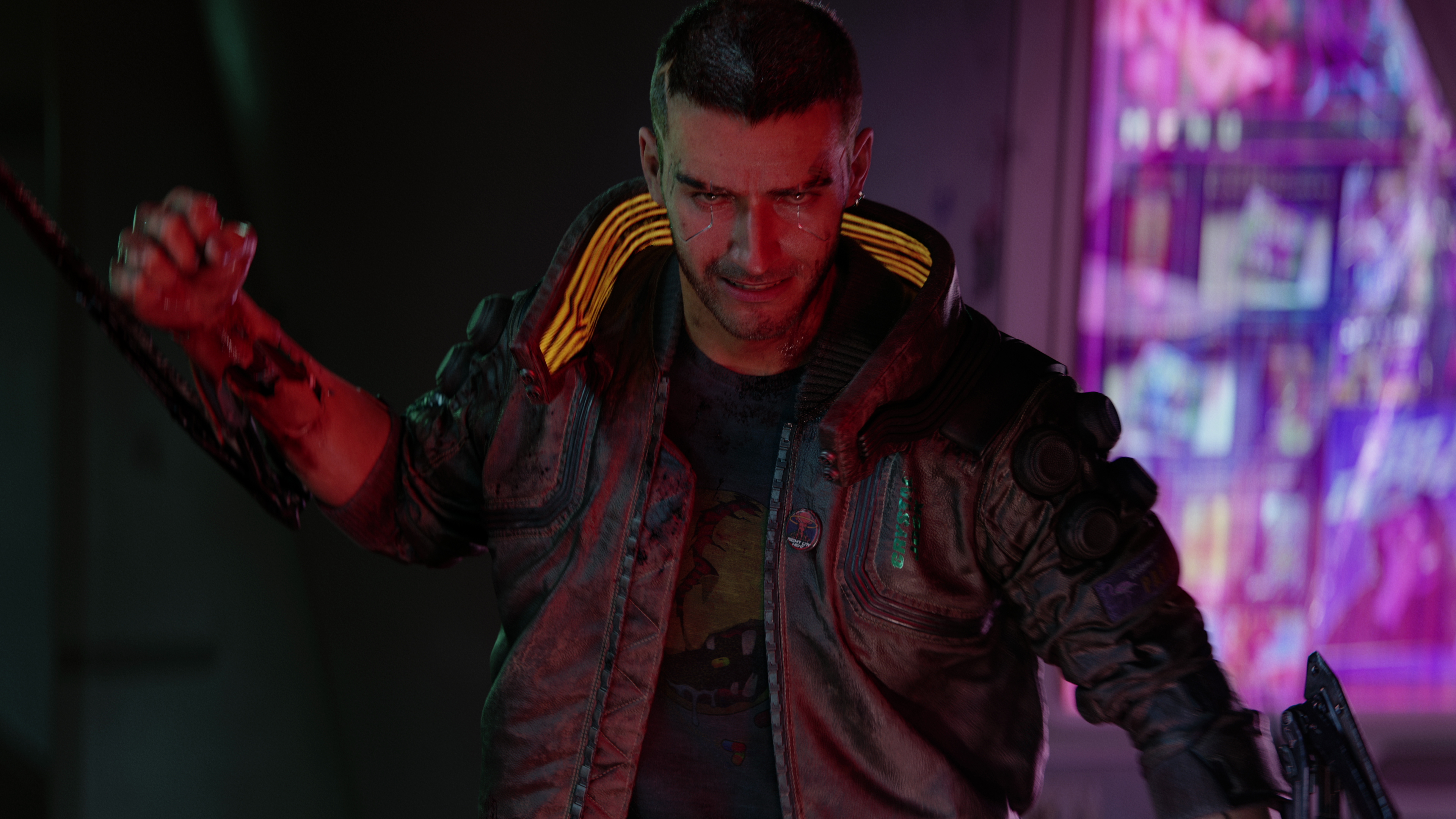
The latest 50-minute hands-off demo of Cyberpunk 2077 is the first time it's looked like a real videogame. At E3 2019, we're past the spectacle of seeing a new CD Projekt game for the first time and are finally figuring out what it actually is. We’ve seen the menus, the upgrade systems, shop inventories, dialogue systems, varying approaches to solving problems—the usual ‘go in stealthy versus guns-blazing’ approaches were mentioned. We’ve seen the box art and ridiculous collector's edition.
Cyberpunk 2077 feels like Deus Ex with an obscene budget and Keanu Reeves. Like a thing that we will conceivably play and finish in April of 2020. It exists. The demo wasn't a revelation in game design, even if the technology and art direction is staggering in scope and detail. This is CD Projekt pulling back the curtain and tamping down the cumulative years of excitement to remind everyone that it's made a very large role-playing game and that it looks very nice and that it's coming out soon. Here's what I saw and what I thought about it.
Above: CD Projekt hasn't released video of the E3 2019 gameplay yet, just the cinematic trailer.
Sorry state
The demo opens on a character creator, with the generic box art V staring at himself in a mirror. Keanu Reeves' character Johnny Silverhand leans on a nearby wall. The character creator isn't final, but it has the expected hair, skin, and facial feature options, if not the monstrous depth the Dark Souls or Mass Effect systems have.
Keanu Reeves has a surprisingly important role in Cyberpunks greater story. He's a hallucination, sort of.
There's also an option to choose your background: street kid, nomad, or corporate. It's not just for your head canon either. Your background opens up certain dialogue choices throughout the entire game. As a street kid, if someone's trying to scam you, you might be able to see through their bullshit having swindled plenty yourself. A character with a corporate background will have a better time navigating big business hierarchies. Once finished making our man, Silverhand comments, not so kindly, "C'mon, you really think they give a rat's dick about how you look?"
Reeves has a surprisingly important role in Cyberpunks greater story. He's a hallucination, sort of, the byproduct of a faulty chip in V's head central to a mystery we're still fairly hazy on. What matters is that he can appear at any point, and often does with some crude, funny commentary in tow. He's a great foil to V's so far monotone delivery. Last year we wrote about how Cyberpunk's dialogue was lacking color and that it was a bit too cliche, but Silverhand is a promising sign our first impressions might not hold true. I wonder if he watches you on the toilet.
We're in the Pacifica district of Night City, a district designed and built as a luxurious resort town replete with lavish hotels, malls, and amusements. But a shaky economy scared investors, so they pulled funding and left the district unfinished and unsupported. The impoverished moved in, with gangs in tow. The secretive hacking gang the Voodoo Boys control most of the district, largely comprised of Creole-speaking Haitians. V, the player character, needs their help, so they head to a church to meet a contact who will put them in touch with the right people.
The biggest gaming news, reviews and hardware deals
Keep up to date with the most important stories and the best deals, as picked by the PC Gamer team.
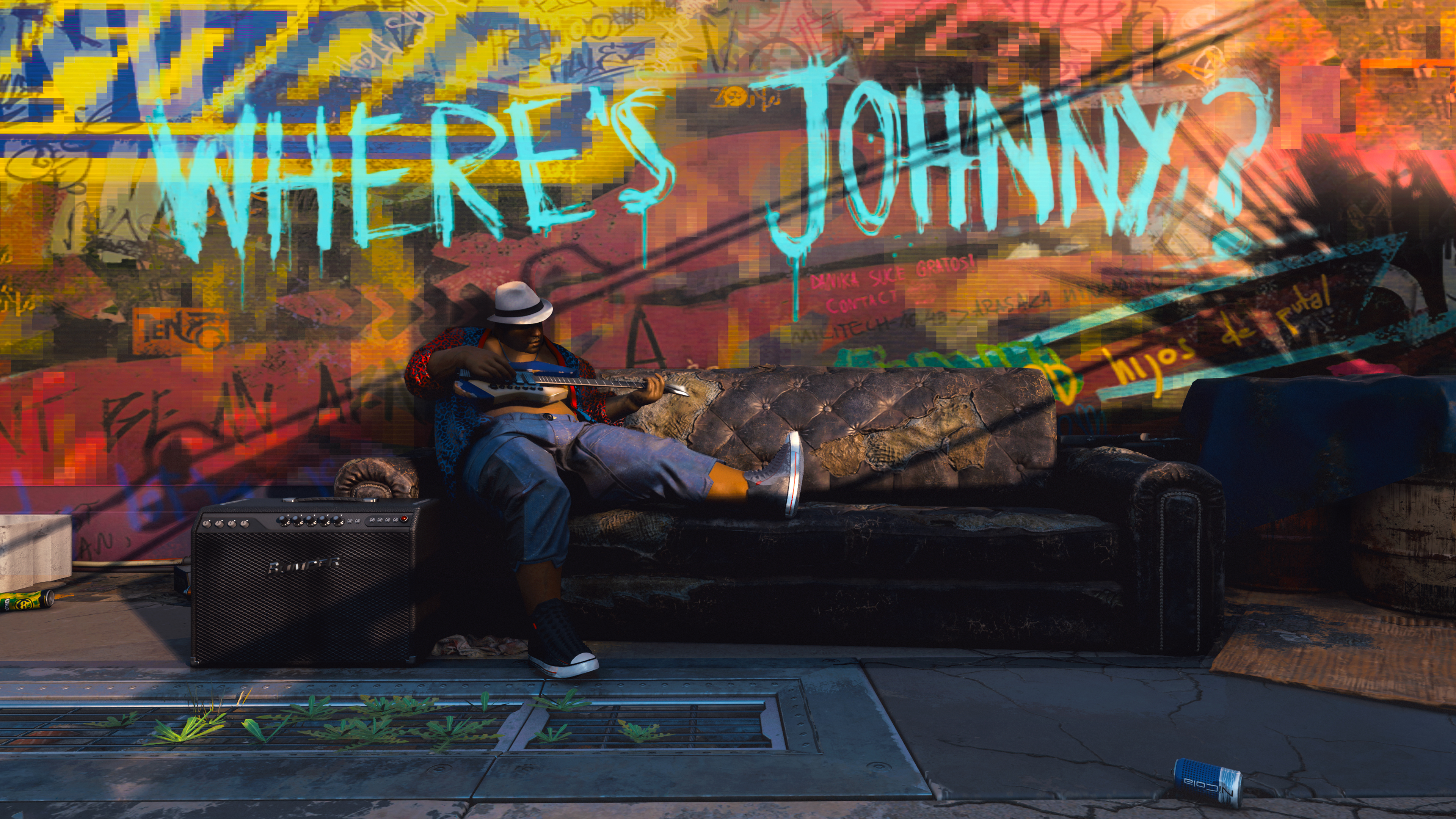
The church is more like a nightclub, a darkened room only lit by the neon glow on the wall behind the altar. The room is so crowded people are touching shoulders. Whoever's driving the demo slowly pushes V through the crowd for a minute before the contact grabs him and tells him to check out a butcher shop nearby.
A short walk through the district puts the poverty on full display. These aren't the rain-slicked neon streets of cyberpunk I'm used to. These streets are littered with dirt and trash. Neon is rare. Buildings are a drab grey-brown. The occasional car chassis is aflame. It's clear that systemic racism is still in play in 2077 and that Pacifica has become a ghetto for Haitians, and I'm really hoping Cyberpunk doesn't just use present-day strife as a backdrop. Cyberpunk is an angry genre, a stylish sci-fi exaggeration (less so, lately) of the byproducts of capitalism and technology working in tandem. Let's see Cyberpunk dig in, yeah?
It's an impressive scene. NPCs shuffle around, some sit around a fire. Everyone looks like they have their own agenda. V enters the butcher shop and speaks to the man behind the counter while an old woman rocks in a chair, singing in her native language as V's retinal input translates the song in real time just above her head, a nice touch. A scanner moves its digital light across V, just in case, and he heads to the back room to meet Placide, a high-ranking member of the Voodoo boys.
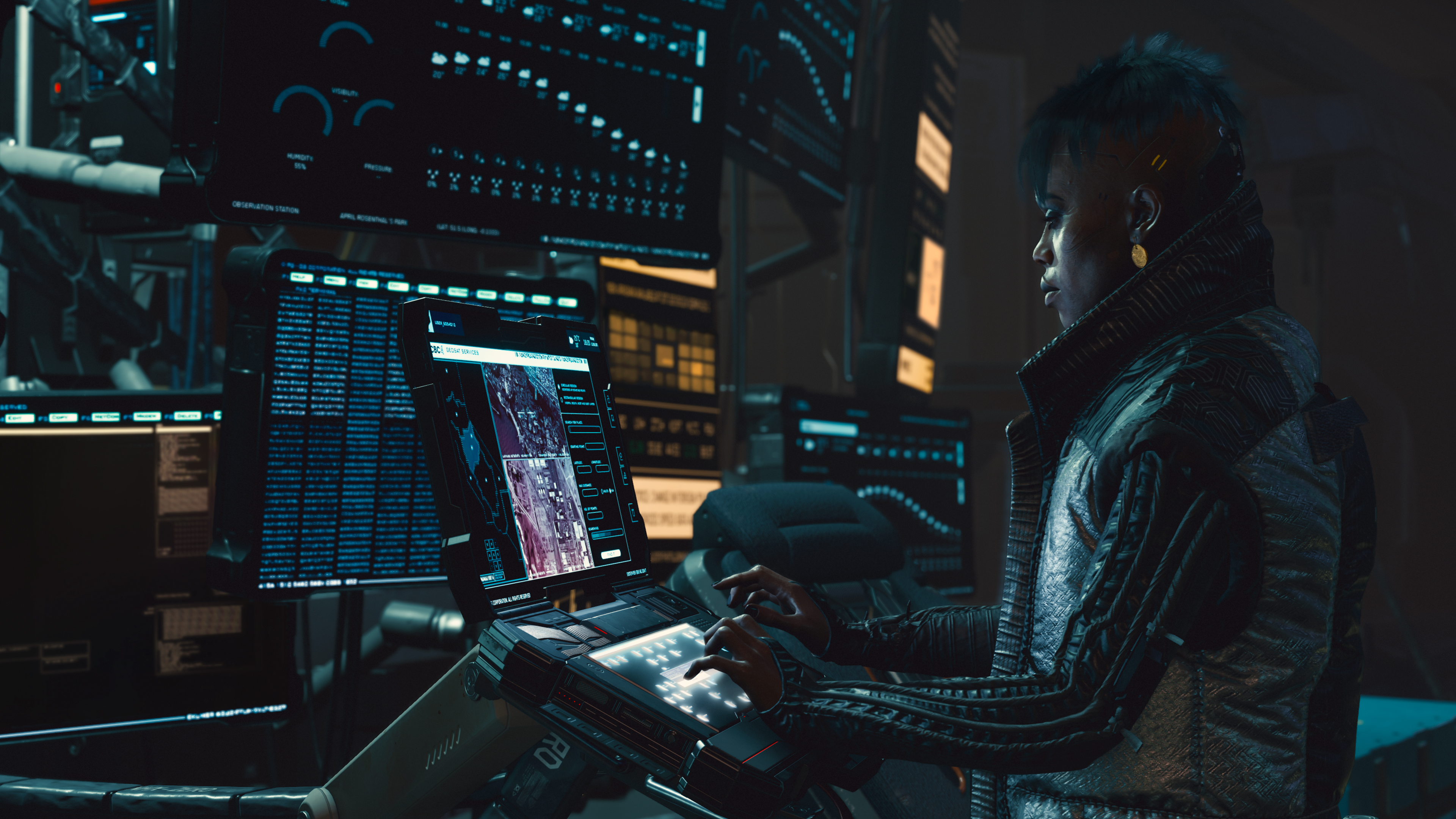
The details of the plot are a bit lost on me without proper context. This mission takes place around the middle of the game we're told, but the basic idea is that V needs Placide's help, so Placide asks a favor of him: figure out what the Animals, a rival gang of juiced up muscle freaks, are doing in the Grand Imperial Mall, one of the last projects to be abandoned in the massive investor pullout that led to Pacifica's collapse. After a quick walk and talk to Voodoo Boy HQ with Placide, he tests V's trustworthiness by trying to 'jack in' to him. As Placide reaches across the desk to plug a device into V's arm, a dialogue option pops up that lets you pull away and WTF the guy. Our V does just that, though it's possible to let him in without a fuss. A man emerges from the door behind Placide, and tells him something that sounds important. Just by looking at the door after the man leaves, V can shift the conversation and ask about what's going on back there, or just leave. It's a nice context-sensitive touch, and I hope to see it used in less overt ways.
So V heads outside, hops on a motorcycle, and tunes to a radio station playing some industrial hip-hop. We're GTA now. The mall is a decent distance away, and our short cycle tour of Pacifica leads us through yet more poverty, trashfires, and wandering locals.
Let's go shopping
V meets two of Placide's men in the destitute parking lot outside. Here's where we get to see more of Cyberpunk's combat options. The mall is a massive open area. It's possible to just waltz in the front door—that's right—guns blazing. But our V takes the back route and sneaks in, crouching behind objects to avoid enemy patrols. It's very typical immersive sim stuff, Dishonored or Deus Ex without the vents or whale barges, except in a setting more well realized than I've ever seen before (and it's not like Dishonored or Deus Ex are lacking in the world-building department). In this way, it's unsurprising and astonishing all at once.
During V's stealth run, he remotely hacks cameras to turn them off, hacks a soda machine to spit out cans and distract guards. Two particular hacks stand out: an Animal gang member is boxing with a training robot. A quick remote hack lets V increase the training difficulty, so the bot clocks the poor bastard and knocks him out, sending a stream of blood into the air. Another Animal is training on a bench press, and because nearly everything is connected to a network, we hack the damn bench press and remotely press the bar into his chest, hundreds of pounds of pressure pushing the bar against his sternum. Dead.
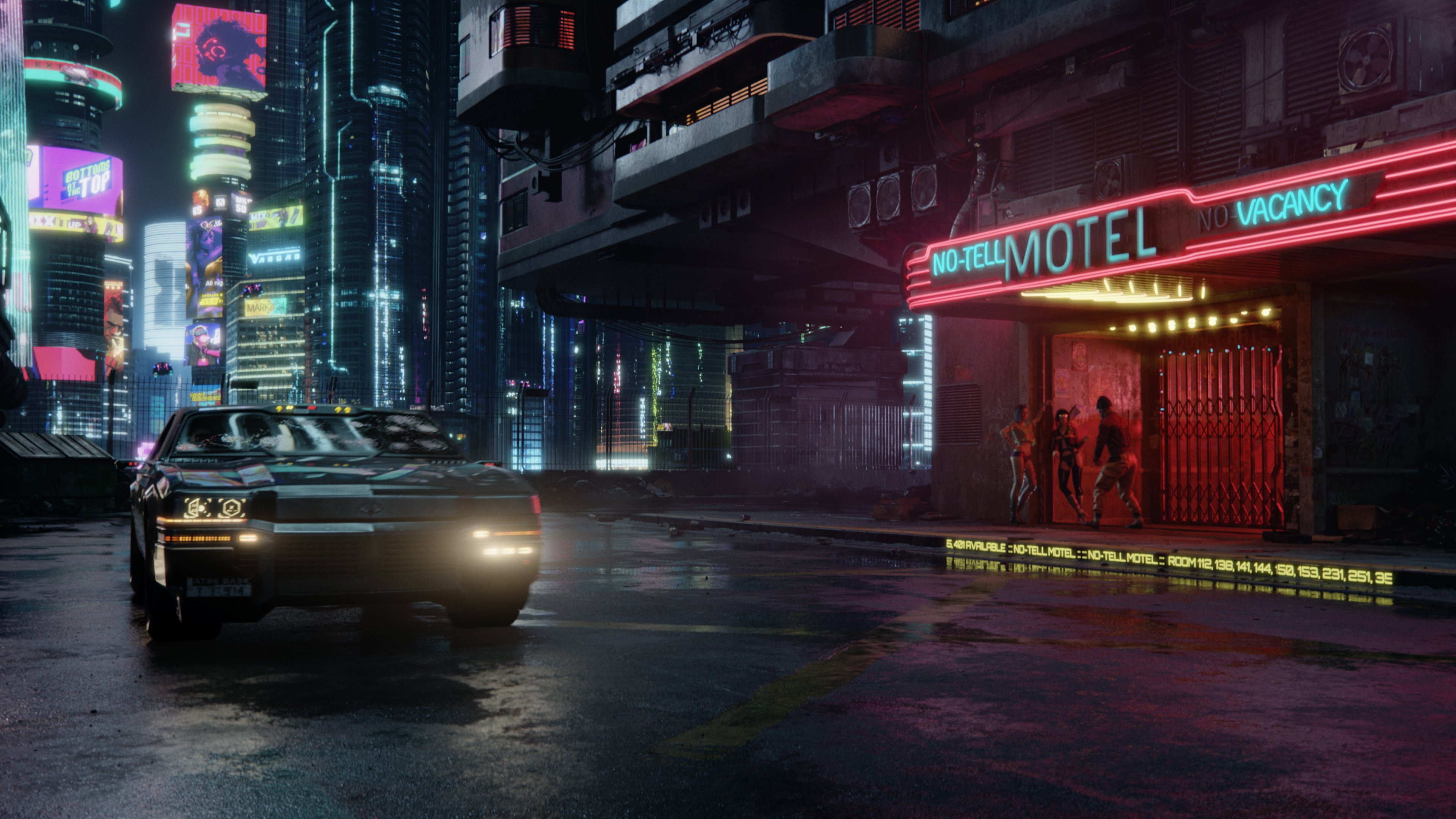
They're clever contextual devices, but there's not a major difference between hacking a soda machine and throwing a bottle to distract patrolling enemies. It's great flavor, but functionally identical to plenty of stealth systems. Not disappointing, but not surprising or particularly challenging. Then again, I'm not the guy with his hands on the controller.
The demo takes a turn as the developers switch to a female V heavily specced into strength and decked out with super strong cyborg arms. We're going to infiltrate the mall again, but not so quietly this time.
It's also about when we get a look at the perk tree, separate from the skill point system. As you play and level up, you'll be able to put that experience towards perks in that open up new abilities or buff exisiting stats/skills in 12 branches: handguns, rifles, blades, hacking, shotguns, two-handed combat, assassination, cold blood, sniper rifles, engineering, melee, and athletics. Some are self explanatory, but I'm curious what others like cold blood entail.
Jacked V gets spotted early on by an unarmed Animal. The big guns (arms) come out and a fist fight ensues. Punches are loud and crunchy, and V makes quick work of the guy, but it wakes two nearby Animals, one of which is armed with a knife. V picks up a bottle, seemingly broken during the first fight, and stabs the poor jerks to death. Again, it's nothing particularly novel in how it plays, but the realistic audio, detailed character models, fluid animations, and blood spatter make the violence sting more than other games with functionally identical melee combat. For the squeamish, know you can finish the entire game without killing anyone.
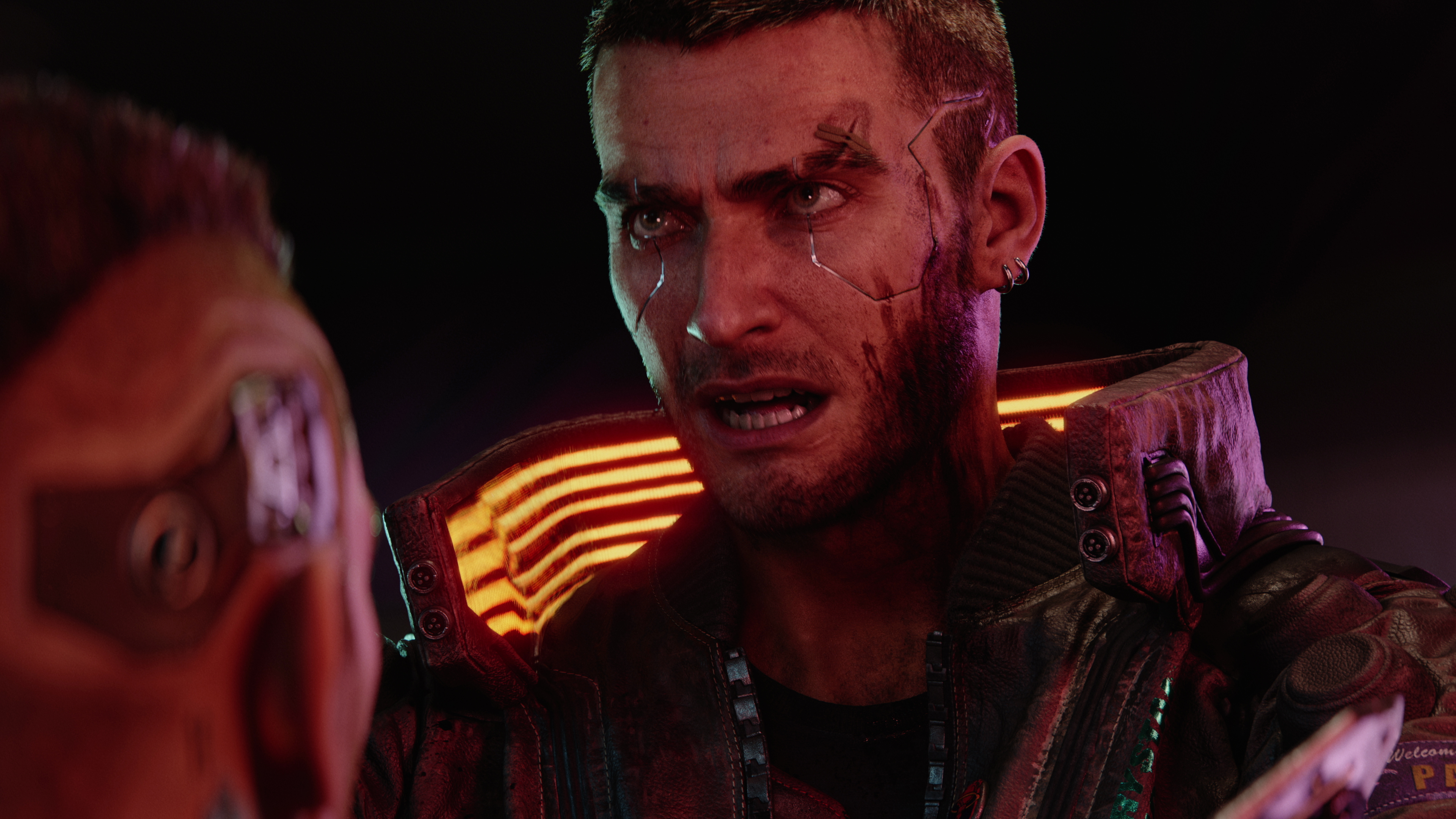
With the room cleared, because of her strength, V can pry open a few doors that weak hacker guy V couldn't. It creates a shortcut to the atrium hacker V had to spend 10 minutes sneaking around and hacking to reach. Strong V's method for clearing the atrium is some Terminator shit. Over a dozen Animals are strewn about the room, accompanied by an automated turret. She's strong and hearty enough to sprint towards the turret and rip the LMG out of the computer-controlled carapace. She turns it on the room and lets loose a constant stream of nonstop gunfire for, I kid you not, about 30 seconds.
Hell yeah, I think I'm going to spec into a strong character too.
It rips through everything, including a dolphin statue at the center of the atrium which sends it toppling over in an impressive demonstration of the destruction systems. Glass shatters, Animals fall by the handful. Cyber muscles can't stop bullets. An eerie silence settles in. Hell yeah, I think I'm going to spec into a strong character too. It's another example of Cyberpunk doing something familiar, but with striking flair.
From there, we whip between hacker V and strong V a few more times, culminating in a disappointingly conventional boss fight. The local Animal gang leader is decked out with strength-enhancing tech too, enough to let her wield a massive hammer. But her metal muscles are easily disabled by shooting the massive purple spot on her back.
One twist I dig: after weakening her she drops her axe, unable to wield it anymore, but immediately rushes and jams something into V's head, uploading some malware. A progress bar appears at the top of the screen, and if V doesn't finish off the boss (her name is Sasquatch) in time, V dies. It's a reminder that we're not a god among people, not the usual chosen one, just another person in a cyberpunk setting with access to the same abilities and tech as anyone else.
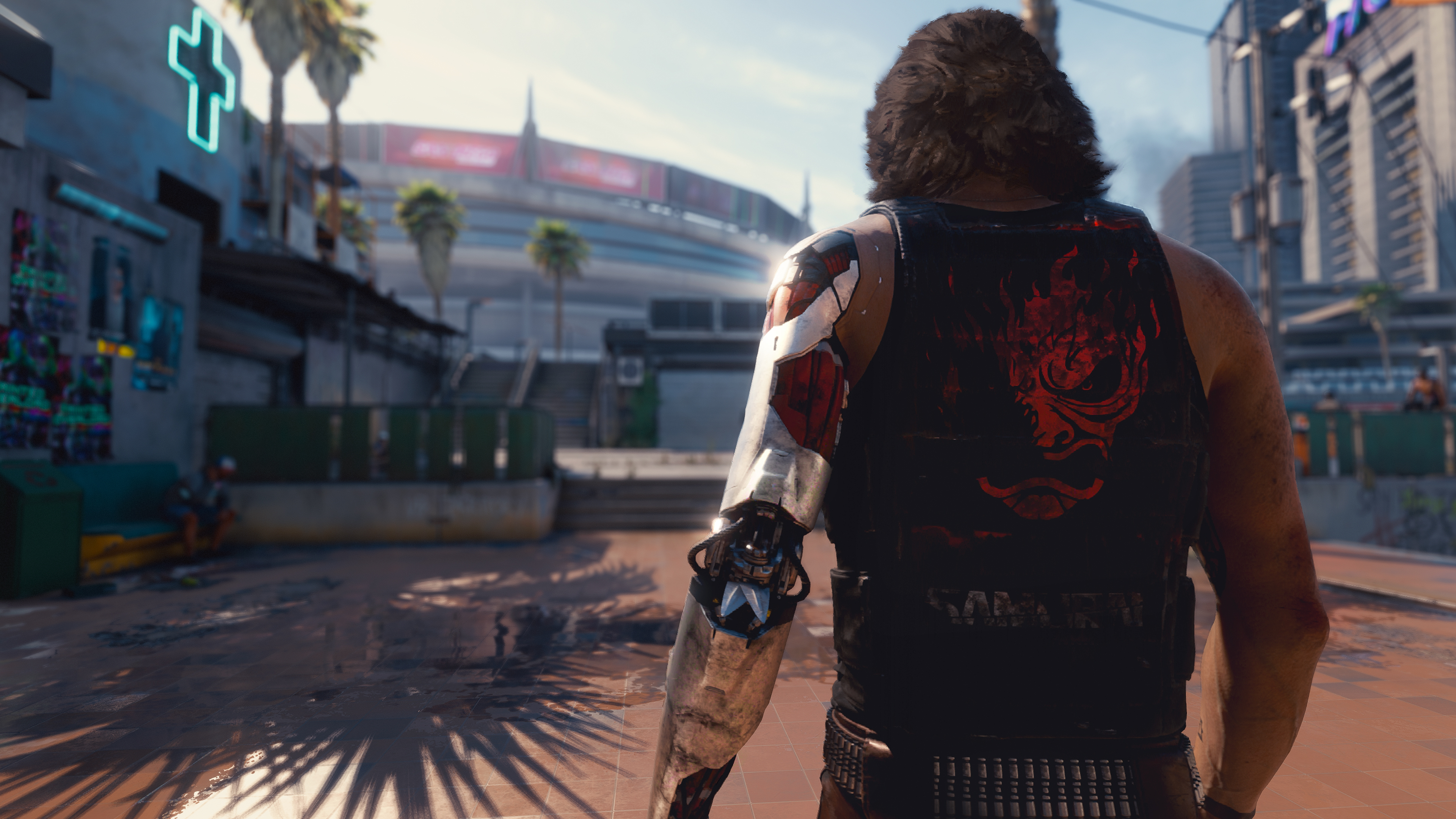
After the fight, V finds his/her target. He's a NetWatch agent, basically an internet cop, and he's in cahoots with the Animals in their attempt to take down the Voodoo Boys. Since this guy has access to the internet cop network, Placide wants access to his brain, but not before V hears what the internet cop has to say. It's an example of the kind of big choices we'll supposedly run into on the reg in Cyberpunk. See, the cop thinks Placide will kill both him and V once he gets the intel he needs. The guy says it's a normal move for the Voodoo Boys. Our dialogue options can lead us to betray Placide and collab with the cop or incapacitate and hack him immediately.
Our V chooses to stick with Placide, which isn't necessarily the wrong choice, but the NetWatch agent was right. Once we jack into the cop's network via his brain and share access with Placide, he uses the opportunity to overload the network and scramble the brain of anyone connected to it at that moment, including V. Oops.
V survives for a story reason, and we're told that reason is connected to the same reason Keanu Reeves lives in our brain as a wisecracking computer ghost. He's a pissed computer ghost now, because once V awakes, he demands V confront Placide immediately. When V leaves the mall, the Voodoo Boys in the parking lot are very surprised to see her still walking, and offer a ride to see the Placide right away. I'm curious to know if you can opt out, and it seems so since you don't have to get in the car as part of the dialogue tree. I mean, how small choices radiate outward into the rest of the narrative are all I'm curious about at this point. The character-building stuff is, from what we've seen, very much in the tradition of the tabletop RPG with modern game skill progression systems layered over the top. I just want to know how far Choice and Consequence™ go in Cyberpunk.
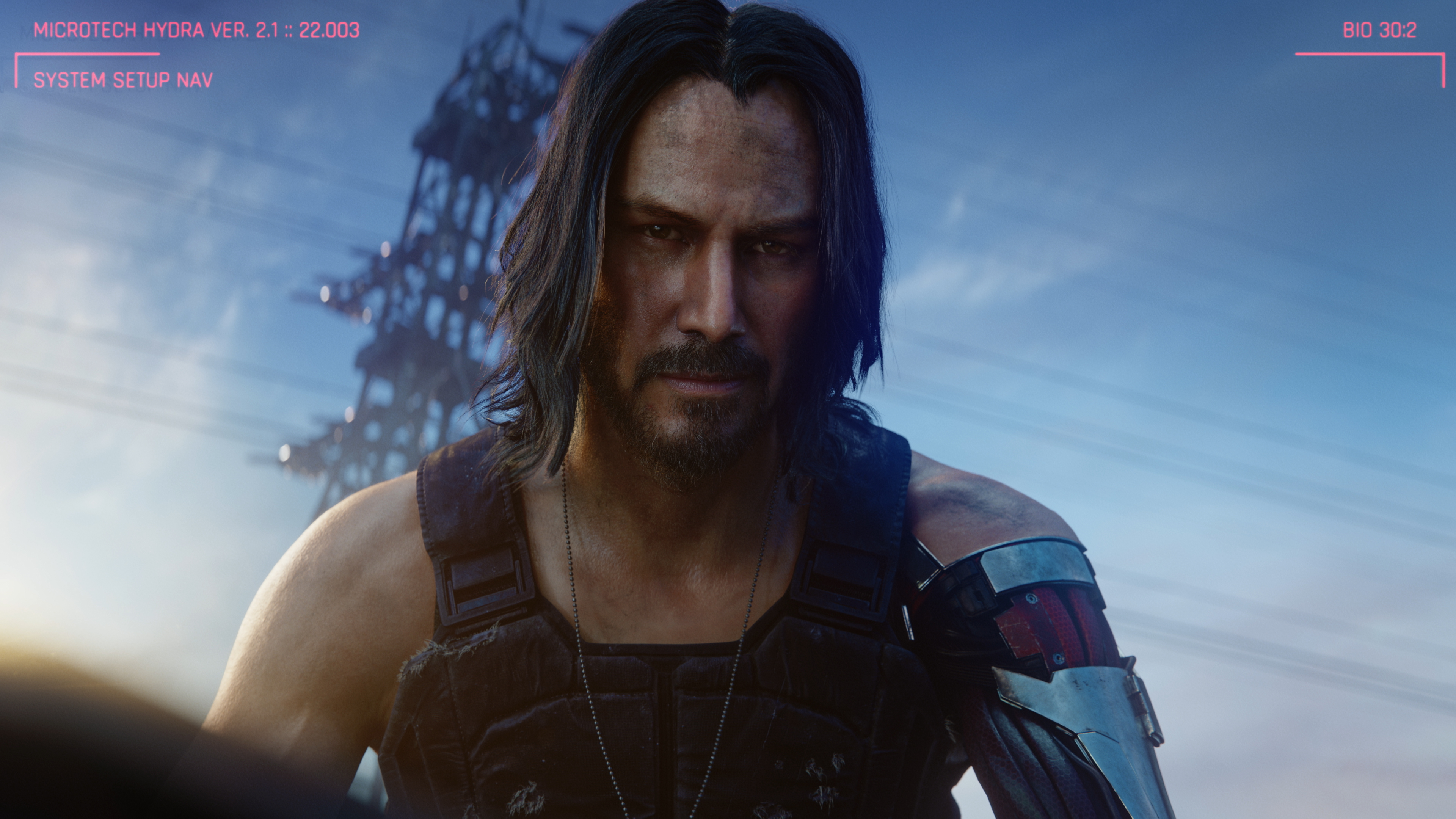
It presents like an RPG with ambitious scope, playstyle variability, and a strict dedication to realizing a cyberpunk setting.
Without getting bogged down in story details we don't have proper context for, we meet Placide's boss, Brigette, someone who can hopefully help V out. And as part of that help, Brigette puts V in a bathtub full of ice. Keanu's character comes out and says hello again before V's sent to cyberspace. It's a truly trippy moment, like the final level in Rez overlaid on the psychedelic transcendence scene from 2001: A Space Odyssey. V walks around in an abstract digital space, accompanied by Brigette, wireframes and digital artifacts zooming by and swirling all around. It's not a place you'll be able to freely explore, but clearly Cyberpunk's story won't strictly take place in meat space. And with that, the demo's over.
Stripped of the mythic quality of its seemingly eternal development, Cyberpunk 2077 doesn’t present like a revolution in game design, and I don’t think that’s CD Projekt’s goal. It presents like an RPG with ambitious scope, playstyle variability, and a strict dedication to realizing a cyberpunk setting.
I left the demo feeling like I had played many games like this before, just never with such a striking attention to detail. The combat looks great, Night City is a grim and gorgeous open world, the RPG systems are deep and varied, and Keanu Reeves isn't just some goofy sidequest NPC—he'll harass you for a good part of the journey.The only thing we need to know now is whether all the time and money and effort to develop such a detailed, fully-featured RPG will actually prop up an interesting story with meaningful character choices. And we'll need to play the whole damn thing to find out.
James is stuck in an endless loop, playing the Dark Souls games on repeat until Elden Ring and Silksong set him free. He's a truffle pig for indie horror and weird FPS games too, seeking out games that actively hurt to play. Otherwise he's wandering Austin, identifying mushrooms and doodling grackles.


